Civil Rights / Cold War
Leisure Time
As life reverted to normal after World War II, leisure time became increasingly important to Tennesseans. Technological changes played a large role in the pursuit of entertainment.
Television
Besides bringing world news to viewers, television provided hours of amusement. People would watch comedy shows like " I Love Lucy " and dramas like "Perry Mason." Television advertised new products, including cars, clothing, prepackaged food, and toys. These items were eagerly purchased by viewers.
Besides bringing world news to viewers, television provided hours of amusement. People would watch comedy shows like " I Love Lucy " and dramas like "Perry Mason." Television advertised new products, including cars, clothing, prepackaged food, and toys. These items were eagerly purchased by viewers.
More leisure time meant Tennesseans spent more time watching television. Sports activities were popular viewing. Since Tennessee didn't have a professional baseball team, fans in the state picked other cities' teams to root for. This included teams in nearby states such as the St. Louis Cardinals and the Atlanta Braves.
Movies
Going to movie theaters continued to be popular in this era. Air-conditioned neighborhood movie theatres abounded, although they were segregated. Whites sat downstairs while blacks sat in the balcony.
Drive-in movie theaters - outdoor theaters with large screens that could be seen from parked automobiles - were also popular. Teens often took dates to places like the Summer Quartet in Memphis where they could enjoy a movie in the privacy of their own cars.
People of all ages saw films by nationally known Tennesseans like Patricia Neal from Knoxville, who played a starring role aside Andy Griffith in the dark, cult-classic movie, “A Face in the Crowd.”
Far surpassing Neal in popularity were two of the more important movie stars of the period, James Dean in the 1950s and Tennessean Elvis Presley in the 1960s. Young people often imitated them, slicking back their hair, and wearing blue jeans, t-shirts, and leather jackets.
Vacations
The automobile and passenger airplane allowed more and more Tennesseans to travel to vacation spots like the popular Disneyland in California. Families often planned vacations to nearby places which could be reached in a day’s drive. These included Gatlinburg, the Smoky Mountains, Rock City in Chattanooga, and Memphis.
Memphis businessman Kemmons Wilson came up with an idea that proved very popular and very profitable. During a family trip to Washington D.C., Wilson had a hard time finding decent motel rooms for his family. He decided travelers needed better lodging with comfortable rooms with televisions and air conditioning, restaurants, and swimming pools.
In 1953, Wilson joined Memphis businessman Wallace Johnson to build a chain of motels called Holiday Inn. All the motels would be similar so people would always know what to expect when they stayed there. He made the plan available to investors who would actually run the property. But in order to keep the name, Holiday Inn, they had to meet the corporate company's standards.
Many leisure activities surrounded children. As parents had more money and more time at home, they wanted organized activities for their children. Elementary schools and organizations like the YMCA held arranged sports leagues for children.
Groups like the Boy and Girl Scouts continued to be popular during this time. Camp Boxwell, a Boy Scout camp with 1,273 acres, opened near Gallatin in the 1950s with the first summer camp held in 1960.
The Middle Tennessee Girl Scouts opened Camp Sycamore outside Ashland City in 1958. At that time the council served just over 8,000 girls. Troops were segregated at this time. Josephine Holloway helped organize the first African American troop in 1942, and was later hired by the Middle Tennessee Council as the advisor for black troops. In 1962, the council disbanded the separate district for blacks. Integrated camps were held afterwards..
Both blacks and whites enjoyed the fruits of economic growth after World War II. But they spent their leisure time in separate areas since segregation was still the norm. It was this noticeable segregation that helped spur the Civil Rights Movement.
Picture Credits:
- Photograph of a Parade on Memphis’s Beale Street in 1960. This parade was possibly connected to the Cotton Maker's Jubilee, an all-black celebration honoring cotton production. Courtesy of the University of Memphis Special Collections
- Native Memphis baseball player Tim McCarver playing catcher for the St. Louis Cardinals. McCarver played for the Cardinals during the 1960s. He played in two World Series championship games while on the team. Tennessee State Museum Collection
- Viewers could sit in their cars and watch movies at the local drive-in theater. This 1965 photograph shows actors Annette Funicello and Frankie Avalon in a scene from the movie "Beach Blanket Bingo." Photograph by Henry Groskinsky/Time Life Pictures/Getty Images. This photograph may not be reproduced without permission of Getty Images.
- Enthusiastic high school students watch a football game in the rain at Dobyns-Bennett High School in Kingsport in 1964. Going to sports games was a popular past time then and still is today. Photograph from the Maroon and Grey Yearbook, 1965
- Photograph of skiers in Indian Gap in the Smoky Mountains. Taken by Albert "Dutch" Roth in the 1940s. Copyright by The University of Tennessee Libraries, Great Smoky Mountains Regional Project
- Photograph of Bettilyn Barnes, the 1949 Mule Day Queen. "Mule Day" in Columbia, Tennessee, has been a tradition in the county since the 1800s. Crowds flocked to the animal livestock show and market which was one of the largest livestock markets in the country. In the latter part of the 20th century, the event became more of a festival rather than a sales market. Tennessee State Museum Collection
- Pop up photograph of James Dean, Tennessee State Museum Collection
- Majorettes with the Isaac Litton High School band go through their routine at the opening of the film "Cleopatra" at the Loew's Theater in Nashville in 1963. Apparently the street in front of the theater (Church Street) was closed for the performance. Isaac Litton's band was one of the more renowned local high school bands during the 1950s and 1960s. Courtesy of The Tennessean
- A father and his son show off their catch after fishing on Kentucky Lake near Paris, Tennessee. The photograph was taken in 1948. Recreational fishing and boating was very popular in the state. TN Dept. of Conservation Photograph Collection, Tennessee State Library and Archives
- A father cooks out at Standing Stone State Park while his children wait for the food. The photograph was taken in 1959. TN Dept. of Conservation Photograph Collection, Tennessee State Library and Archives
- Public swimming pools were still segregated in Tennessee during the 1950s and into the 1970s. In bottom photograph African Americans swim at the T.O. Fuller State Park, which was designated for blacks. In the other, whites sit around the pool at Cove Lake State Park. Both photographs were taken in 1967/68. TN Dept. of Conservation Photograph Collection, Tennessee State Library and Archives
-
A December 25, 1956 issue of LOOK magazine featuring a photograph of Lucille Ball, Desi Arnaz, and their son, Desi, Jr. on the front cover. All three were featured in the television show, "I Love Lucy." Tennessee State Museum Collection, 1998.95.4
Civil Rights / Cold War >> Everyday Life >> Leisure Time >>
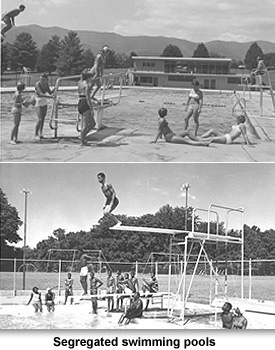
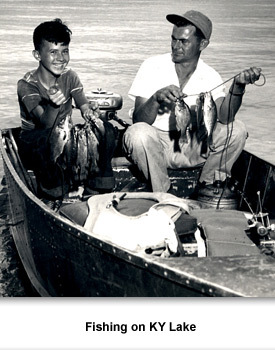
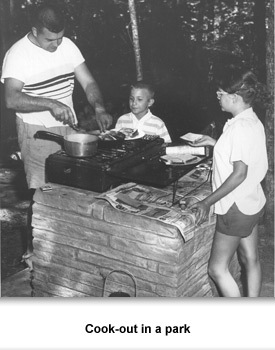
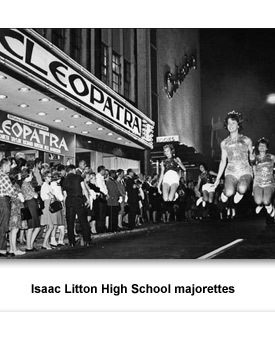
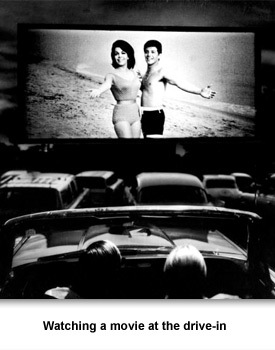
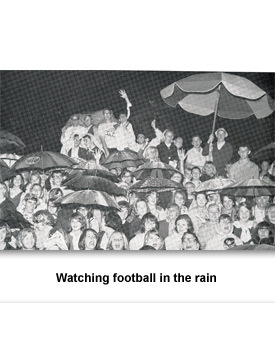
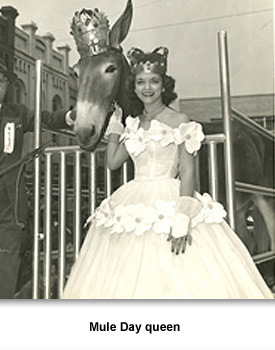
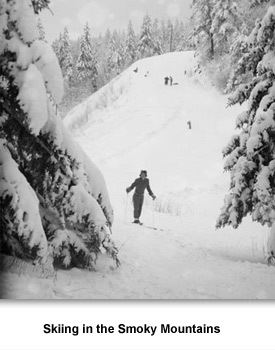
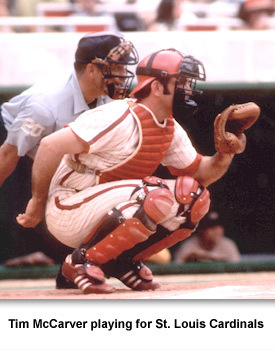
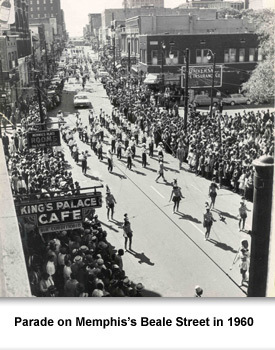
 Sponsored by: National Endowment for the Humanities
Sponsored by: National Endowment for the Humanities